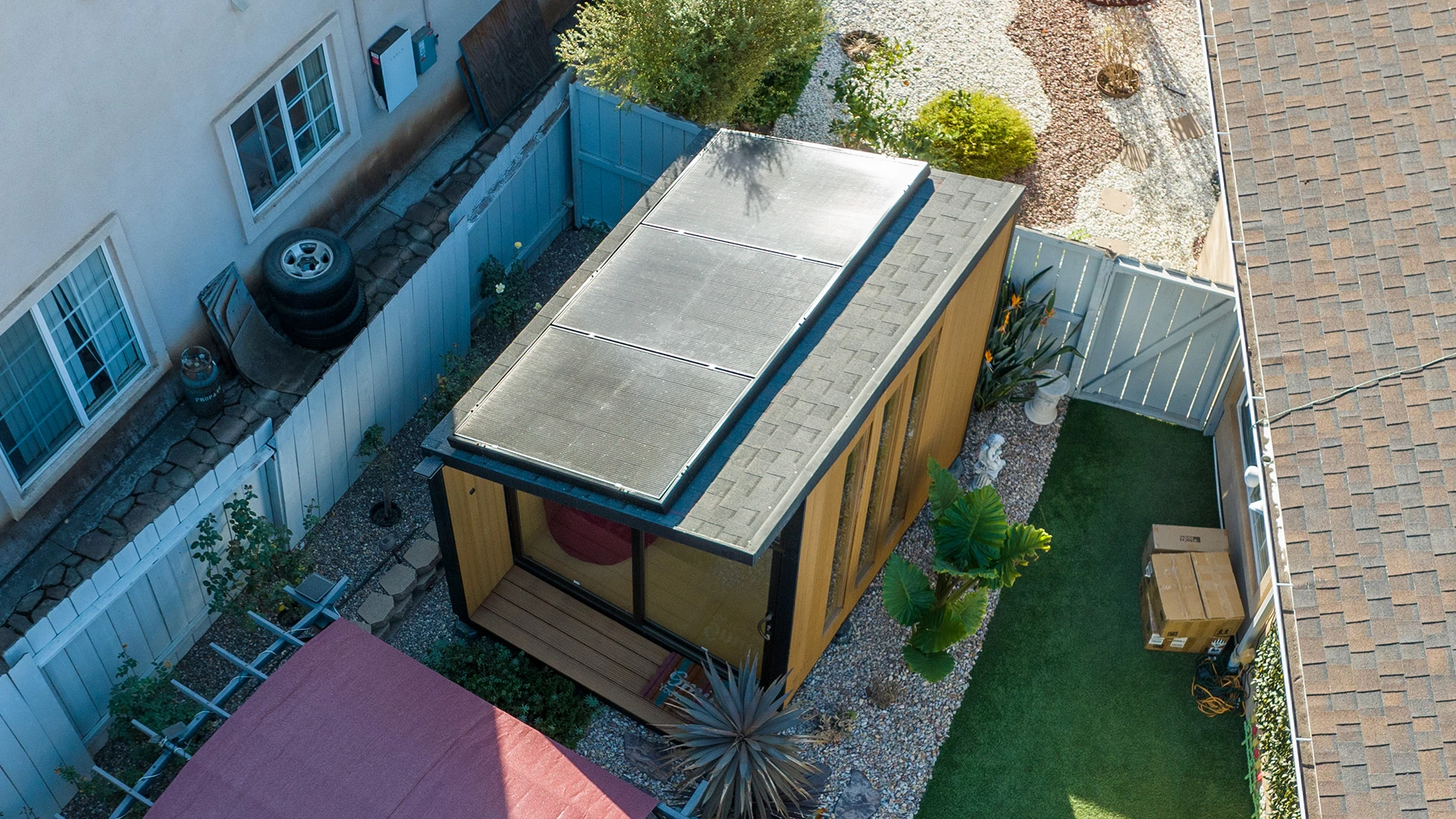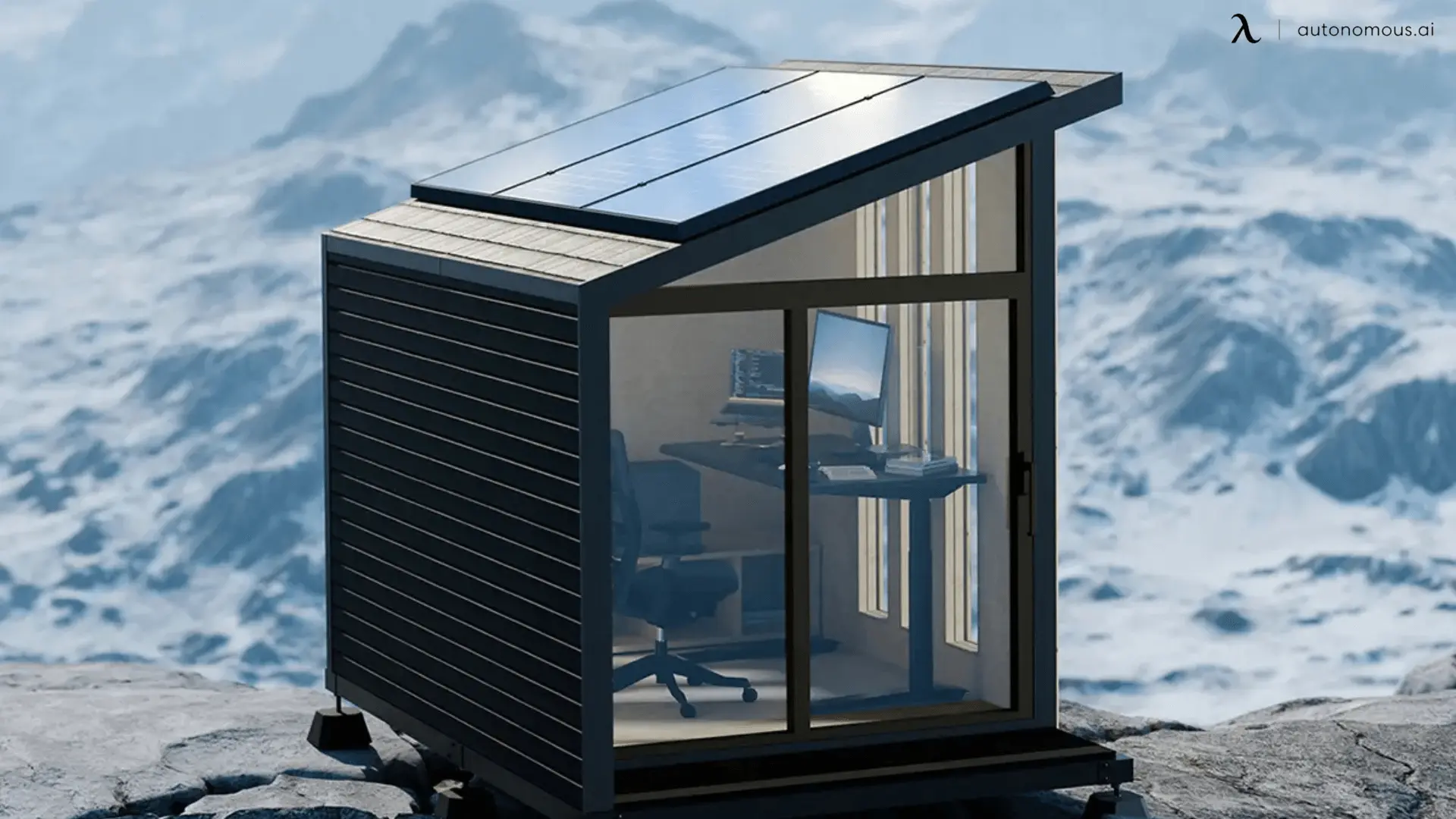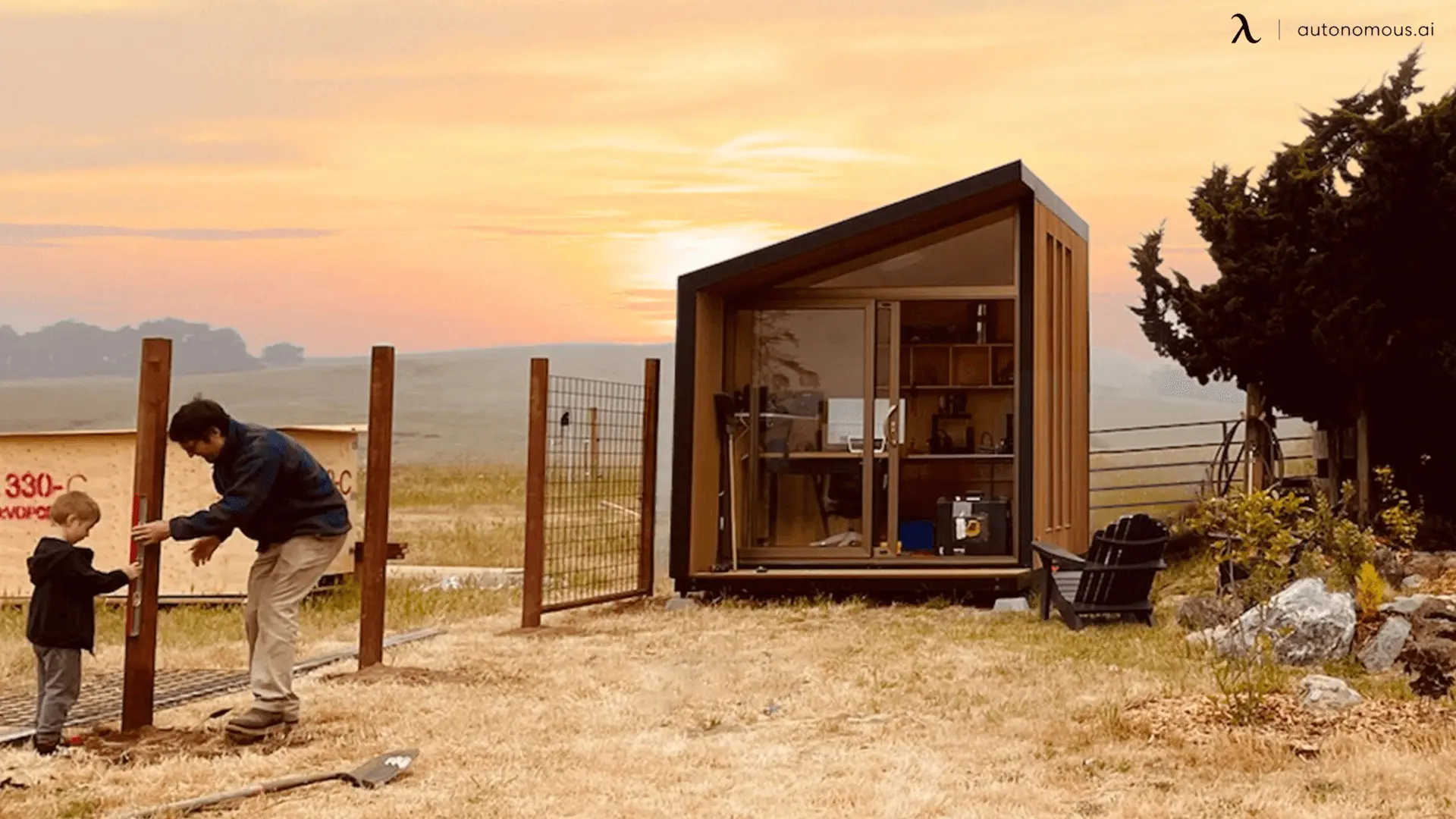.webp)
DIY Solar Power for Shed - Calculating Guide
Table of Contents
Giving solar power to your shed is one of the best ways to save energy without having to spend too much money on that. By getting solar power for your shed, you can start repurposing that space for useful things, such as working!
Not only is solar power independent of your current electricity system, but you don’t have to do much landscaping work to set it up.
Of course, if you want to get a solar power system for your shed, you must be careful and calculate how much energy you’ll get for it. This article covers all the information you need to know about it!
1. Can You Power a Shed with Solar Power?
Yes! You can supply electricity to your shed through solar power. Solar Photovoltaic (or “PV”) panels are great for outbuildings since they generate zero emissions and operate silently.
Conventional generators often cause too much pollution, and they’re also noisy. By running power to your shed with solar panels, you can stop worrying about these things.
Here are some factors you may want to consider when installing solar power in your sheds or home office pods:
1.1. Permits
Most of the time, you don’t need to get a permit to install DIY solar power for a shed. However, there are a few cases where it may be necessary.
If you were to install a rooftop solar system and wire it to your shed, for example, you would need a permit. Otherwise, if you’re only interested in powering your shed with solar panels, you should be good to go.
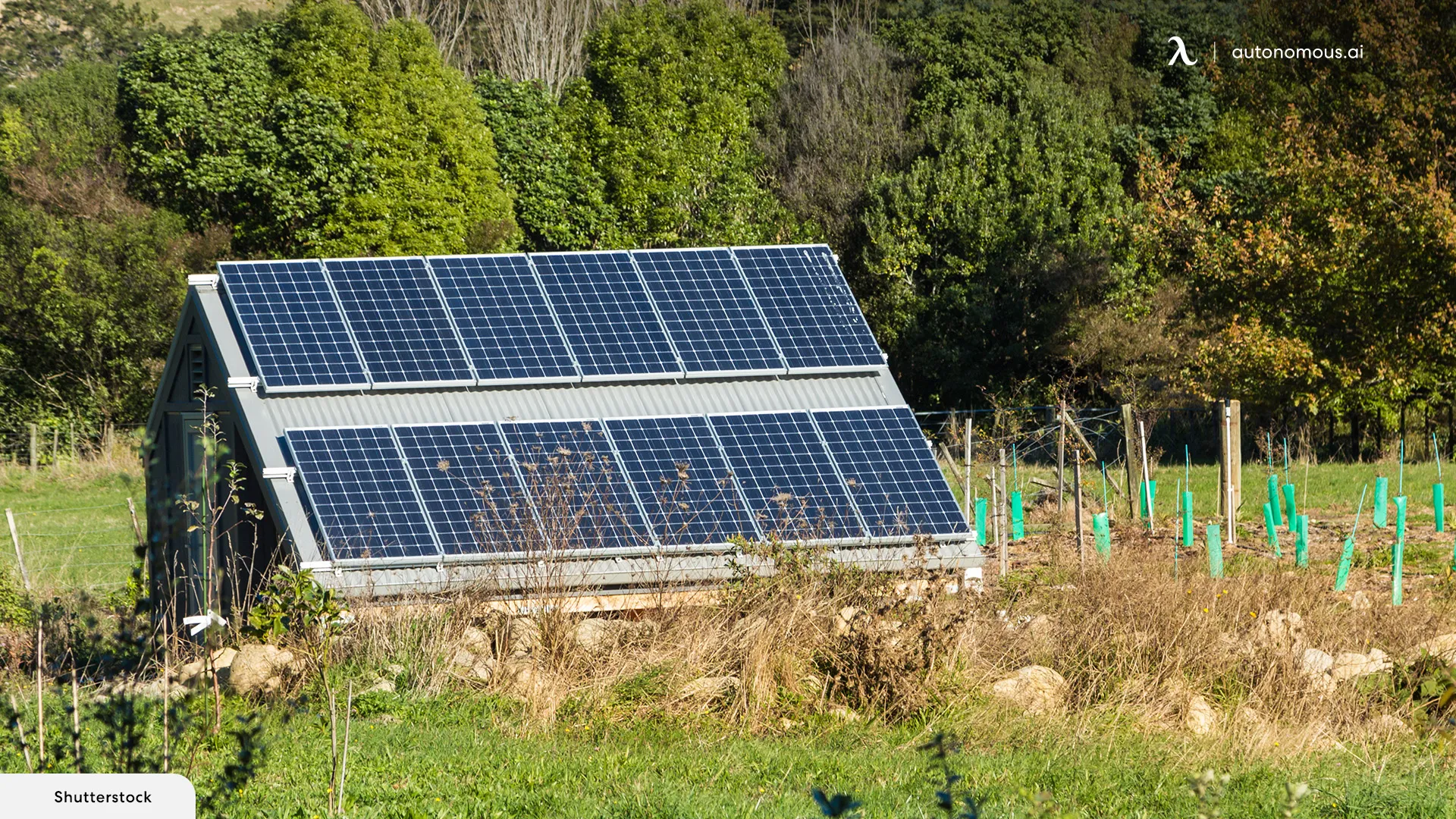
1.2. Costs
Even though the cost to run power to a shed is lower than using conventional energy generators, you should still calculate them.
You’ll get different costs of solar power for your shed depending on how many appliances there are, how much time you spend on it, etc. If you’re looking for a small solar power system for a shed, the chances are that you won’t spend too much on it.
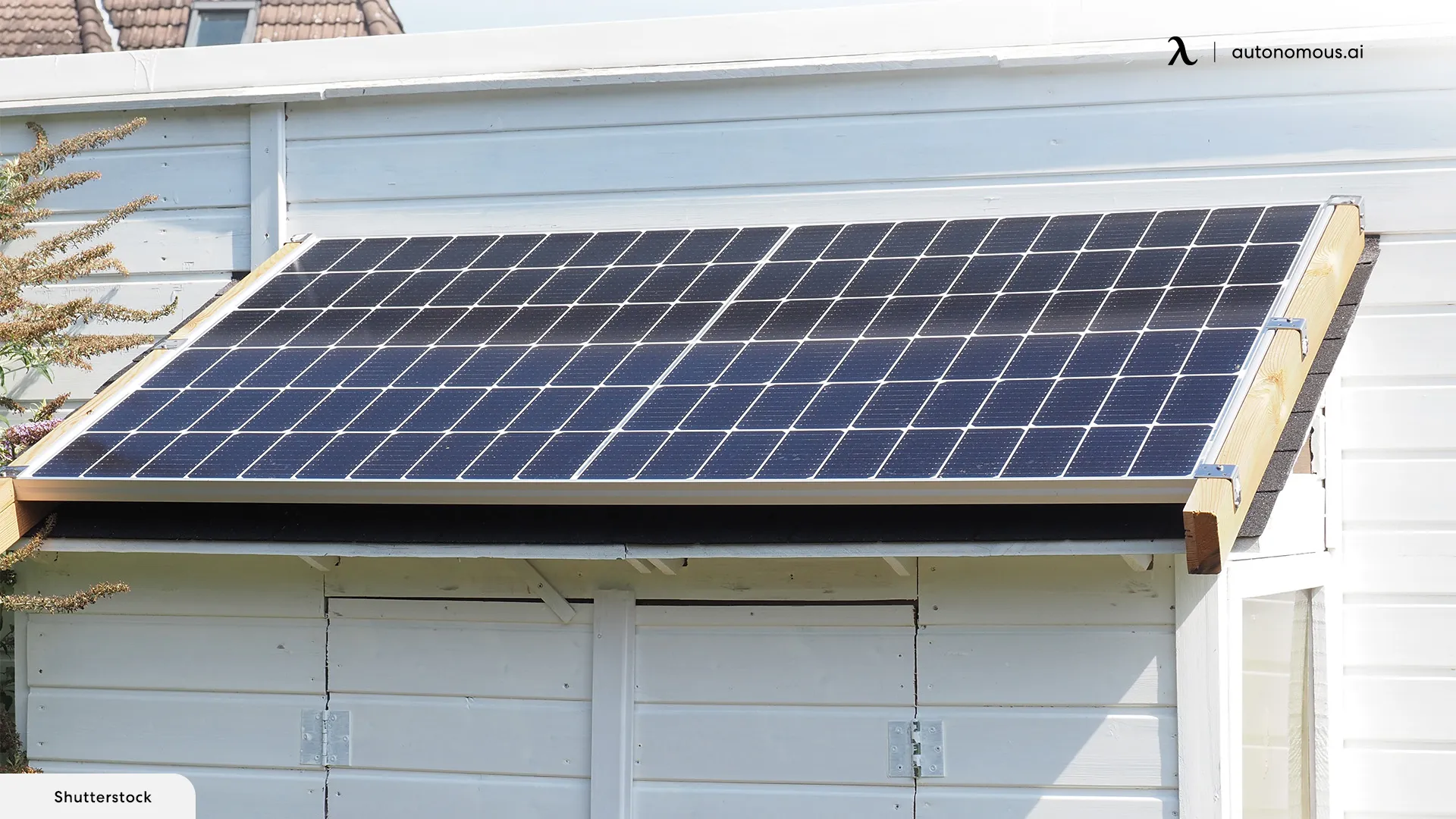
1.3. Roofing Types
There are plenty of shed roof types to choose from. If you want to get solar panels for the roof, however, you get three options to choose from.
Keep in mind not everyone chooses to install solar panels on their roofs, but if you’re considering aesthetics and functionality in your project, that may be one of the best places to get them on.
Monocrystalline panels are known for providing more wattage per square foot, so they’re great for smaller sheds.
You also get polycrystalline and thin-film panels, which may be cheaper in some cases but don’t offer as much wattage. This means you may have to get more panels to provide enough solar power for your shed.
If you’re unsure of where to start, you may consider DIY solar power for a shed. These kits come with all the instructions you need to get everything sorted.
1.4. Professional Help
If you’re looking to install solar power for a small shed, consider your experience with energy systems. Even though DIY systems are great for those who don’t know how to get started, you may still struggle to calculate how much wattage you need to power your shed or prefab ADU.
We suggest getting professional help if you’re unsure of whether you can tackle the project yourself. It’s much more worth it to invest some money in professional help than risk making a mistake.
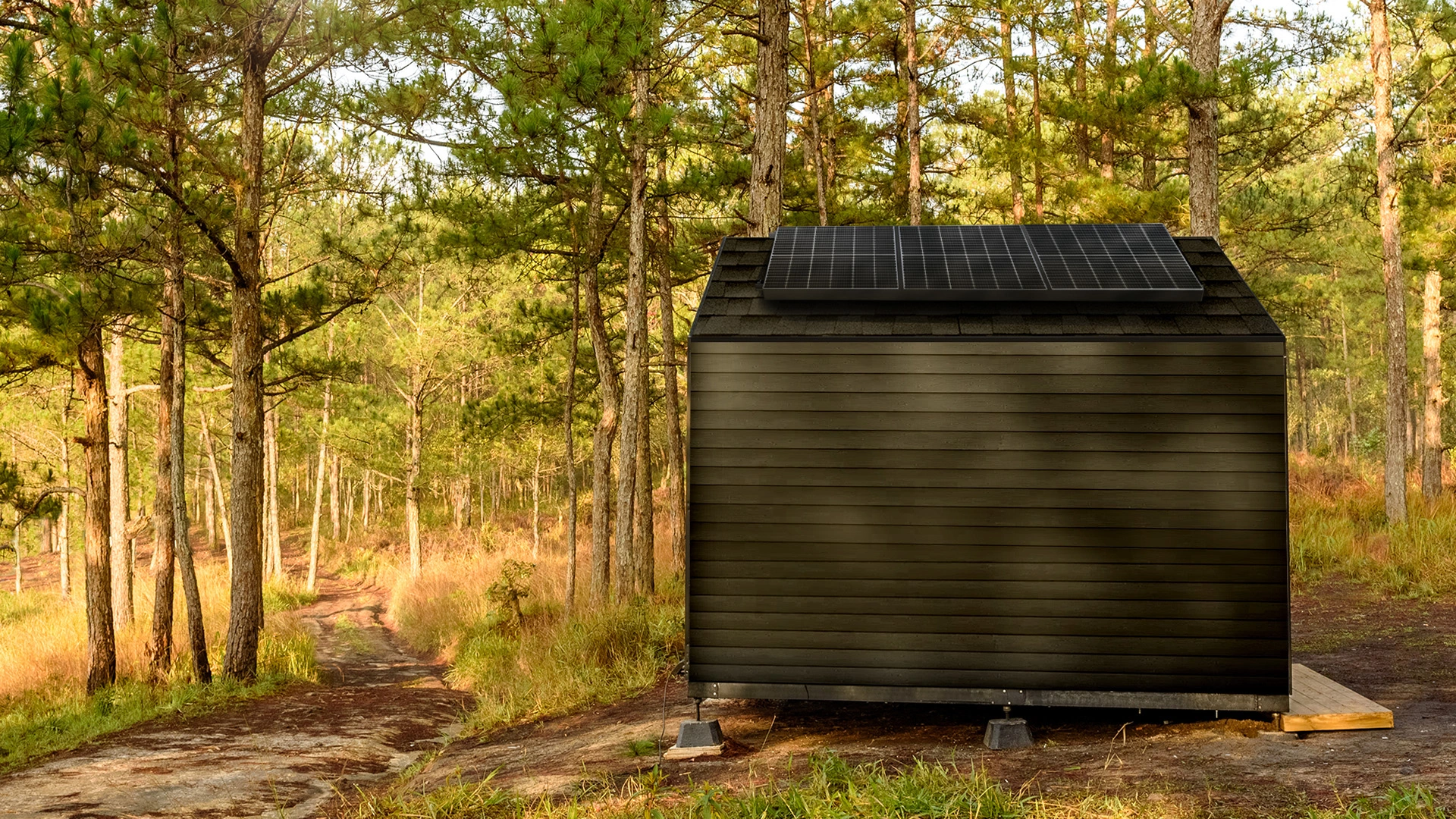
2. How Much Solar Power Do You Need for an Office Shed?
Here’s where the fun starts. As mentioned, you must consider how much wattage you’ll need before installing a solar power system for your shed.
A great tip is to consider what you’ll use the shed for and how many appliances you plan on getting in there.
If you’re powering a prefab studio for office work, for example, you may need quite a few things. Here’s an overview:
- Electric Heater – Up to 3000W
- LED Lights – Up to 40W
- Coffee Machine – Up to 600W
- Printer – Up to 200W
- Laptop – Up to 200W
- Ceiling Fan – Up to 80W
- Chargers – 10W approximately
These are estimates, but remember you’ll get different numbers based on what you’ll get in the shed. The average shed will need about 2.7 kWp DC to be fully powered. Not everyone will want to get an electric heater or ceiling fan, for example.
Office sheds are perfect for those who want to unwind and be at peace while working. Depending on what you’re planning to do, you may want to consider from 3000W to 4000W of solar power.
It may not seem like it, but getting solar power for a shed or modern ADU isn’t that expensive compared to other uses, such as workshops. Even if you don’t have the budget to deal with high wattage amounts, you can still get a small solar power system for your shed and only get the essentials in.
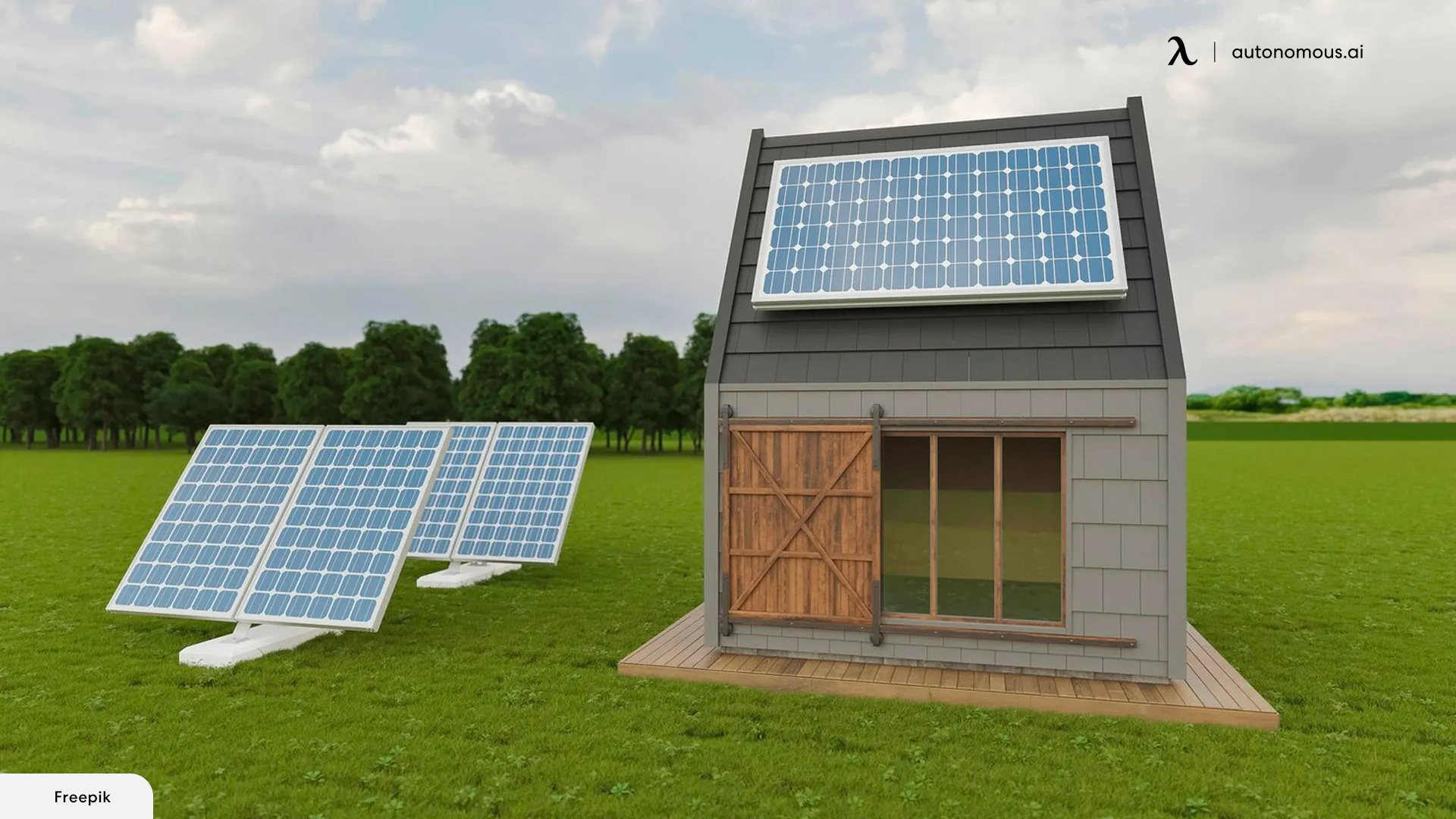
3. How Much Does Solar Power for a Shed Cost?
Getting solar power for a small shed is already an attractive option for many, especially those who want to save money on energy costs.
How much will you save, though? The key is understanding how much you’ll spend based on the type of shed you have.
If you don’t even have a shed, you can start searching “How much do tiny houses cost”? There, you will get an estimate of how much you’ll spend to build the structure you’ll work with.
Once you’re done, you’ll factor in the cost of the solar panels. Most of the time, the investment will seem too high, but if you compare that with your energy savings, you’ll notice it’s worth it.
You might pay different amounts depending on the panel’s manufacturer, the type of panel, and installation (if applicable). Usually, panels run from $100 to $400. Some manufacturers offer bundles, so you could pay the same price for two panels instead of one.
If you plan on getting a small solar power system for the shed, you may only have to get one panel, which could save you a lot of money. On the other hand, a bigger shed will incur other costs.
A big solar-powered shed, on average, will cost $11,000. This budget includes the solar panels, the batteries that store energy, and the balance of the system that converts the energy from the batteries to electricity for your shed.
Keep in mind that said budget is meant for bigger-scale projects. If you don’t need too much electricity, you could spend less than $1,000 to set everything up (assuming you already have a shed).
If you’re installing the panels with a professional, you would also need to factor in the installation costs.
You could save plenty of money if you’re installing solar panels somewhere with high energy prices and high sun exposure.
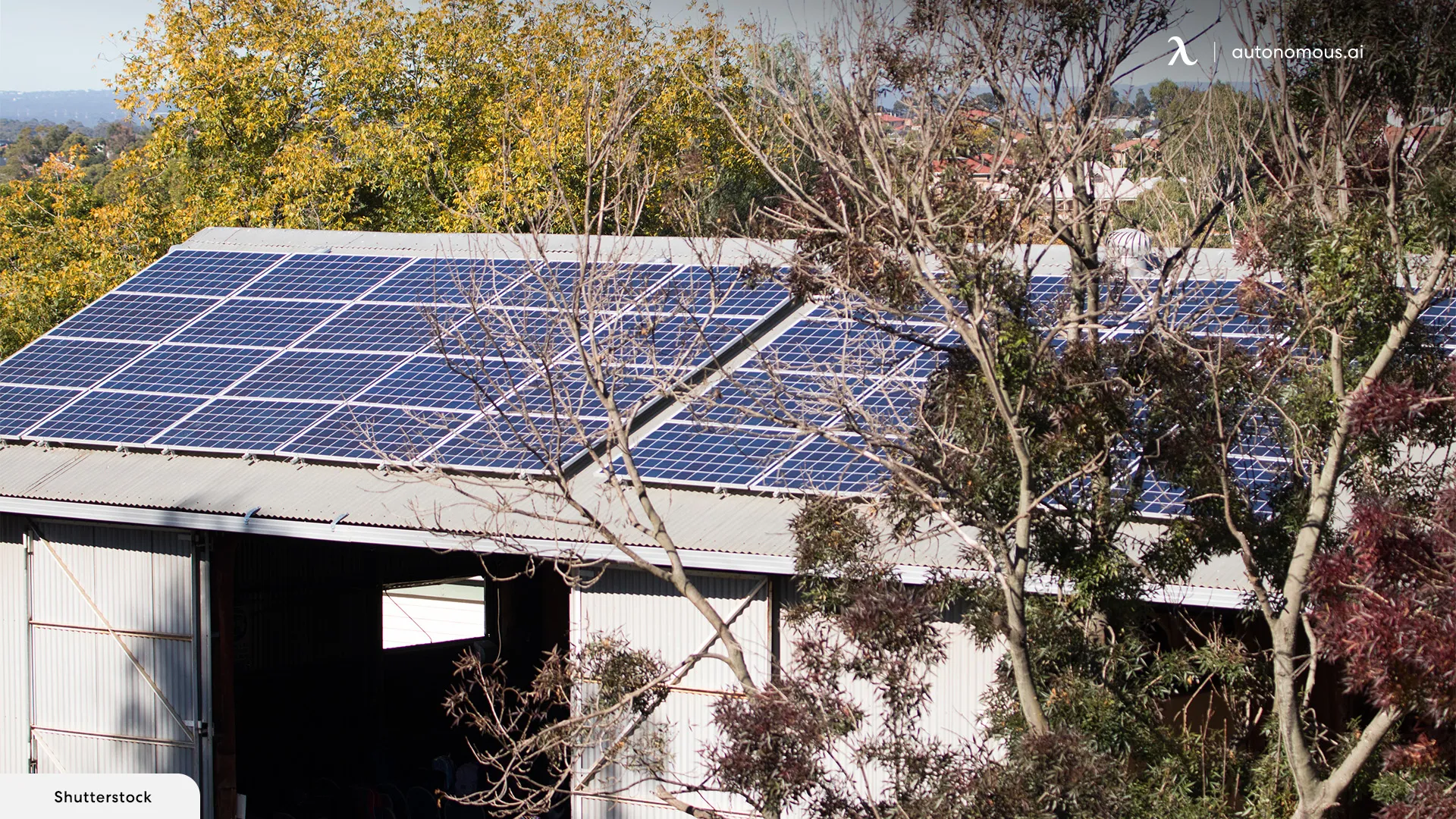
Determining the solar power requirements for your office shed can be a complex process, but there’s an easier way—consider opting for a pre-designed solution like the WorkPod Solar.
WorkPod Solar: The Turnkey Solution
With the WorkPod Solar, there’s no need to calculate your energy usage or determine the number of panels required. This pre-built office shed comes equipped with:
- 10.2kWh Solar Battery: Enough storage capacity to power typical office equipment like laptops, monitors, and lighting for an extended period.
- Pre-Integrated Solar System: Includes solar panels, an inverter, and all the components necessary for efficient, reliable energy generation.
- Plug-and-Play Design: Eliminates the complexity of assembling and wiring a solar power system. Simply set it up, and you’re ready to go.
Why Choose WorkPod Solar?
- Perfect for Remote Work: It’s designed to meet the energy needs of a modern office without overcomplicating setup or requiring professional installation.
- Eco-Friendly: Harnesses renewable energy to reduce your carbon footprint while cutting down on utility bills.
- Ready in Days: Skip the time-consuming planning and installation process—WorkPod Solar can be delivered and operational in as little as seven days.
If you’re exploring solar power for your office shed, the WorkPod Solar offers a simple, cost-effective, and sustainable alternative to traditional setups.
4. How to Calculate Solar Panels and Energy for Your PV System
How do you know how many panels you need? You have to make a few calculations.
Follow these three steps to get started:
- Calculate Your Approximate kWh Usage
First, you must get your kWh usage from your regular electricity bill. Your goal is to get information on 12 months of usage.
You must add up your kWh usage for a year. Then, take that amount and divide it by 12; that’s your average monthly kWh usage. Remember that electricity systems tend to ask for more energy during the summer and winter months.
Finally, divide your monthly kWh usage by 30. This will give you your daily kWh usage.
If you don’t want to guess too much, consider looking for a power consumption table for your home appliances. This will give you a better idea of how much kWh usage your appliances would use each month.
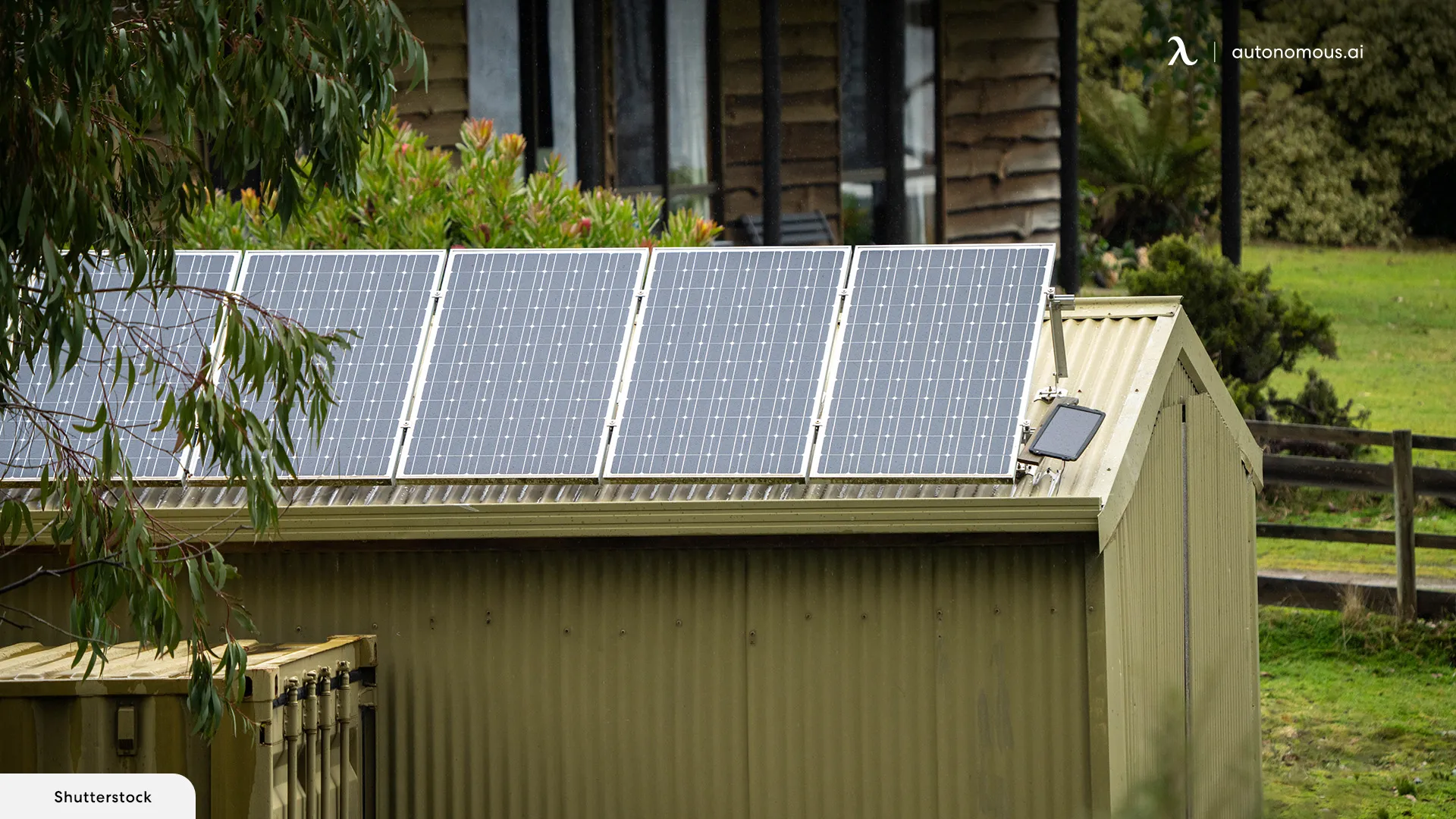
- Consider Your Peak Sun Hours
You’ll get different peak sun hours depending on the climate and your location. If you want to make the most out of your new power system, you must calculate how many peak sunlight hours you’ll get every day.
Start by getting a sun-hours map. Find the area nearest to where you are, and write down the average peak sun hours.
- Calculate How Big Your Solar System Will Be
Here’s the tricky part. You must take your daily kWh requirement and divide it by your peak sun hours, and that will give you your estimated kW output.
Once you get your output, you must divide it by your panel’s efficiency rate to get an idea of how many panels you need to get.
The formula would look like:
(Daily kWh ÷ average sun hours) x 1.15 efficiency factor = DC solar system size.
You can also multiply your solar system size by 1,000 to confirm how many watts of solar panels you need.
5. Setting Up the System
Now that you have a better idea of what you need, here’s how to make the most out of it:
- Select the Right Mounts
If you’re struggling to install your solar panels, you should consider getting a roof mount. It costs less than other racks.
Most of the time, your system should point toward the equator for maximum output. If you live in the Southern Hemisphere, for example, you would need to consider north-facing options to set your mounts.
- Choose the Right Solar Panels
The type of roof you have will help determine which solar panels fit you the most.
If you have a large usable roof area, you can get a few large panels to get to your target output. This is often the most convenient option.
On the other hand, if you have a limited roof area, you may have to get smaller, high-efficiency panels. The main benefit here is that you can get more panels as your energy demand increases.
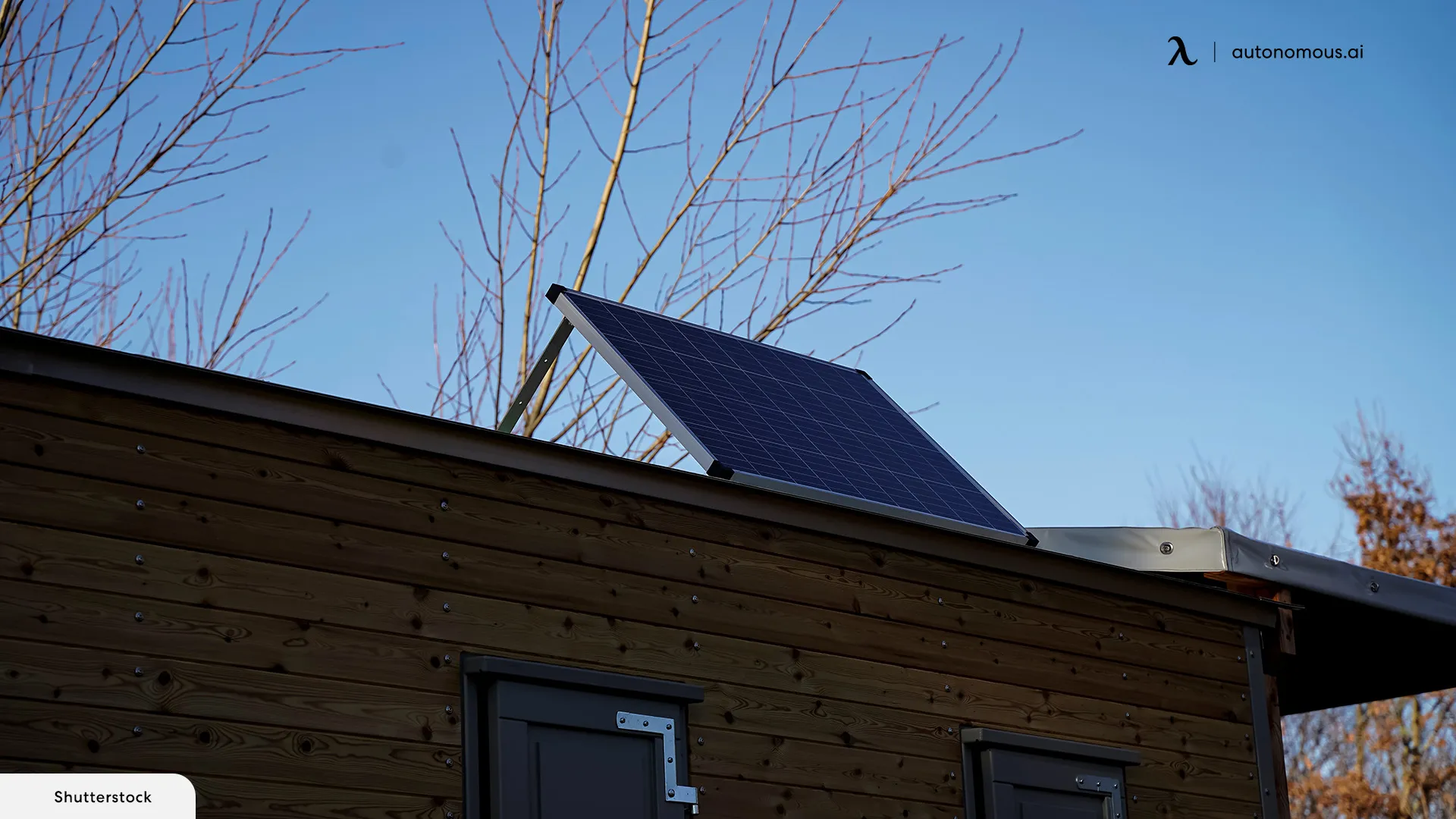
- Calculate Your Solar Output
This is the final step of the calculation process. You can use a PV watts calculator to determine how much power your system is expected to put out.
If the calculator isn’t an option, you can also take the power rating, multiply it by the peak hours of sunlight, and multiply the result by .75. A 500W panel, for example, would have this formula if you lived in an area with five hours of peak sunlight every day:
500W x 5 x .75 = 1,875Wh
In other words, your panel would produce 1,875 watt-hours daily, which translates into 1,8 kWh in most conditions.
Remember you can seek help from a professional if everything we just mentioned seems too complicated to start.
6. Learn How to Assemble a Solar Power Kit for Your Shed
Getting a solar power kit for your shed is often the most user-friendly option. These kits often come with everything you need to set it up, and it doesn’t take too much effort.
DIY solar panels often come with pre-drilled holes, making the process easier.
Here’s an overview of what to do to install everything:
- Run connecting wires throughout the structure.
- Install the solar panels.
- Set up your portable power station or balance of system items.
- Install the connectors.
- Plug everything into the solar generator.
Most of the time, DIY kits also come with fixings and mounting brackets. Make sure you mark out where you’ll place the roof mounts and secure them. Then, you can start mounting the panels carefully.
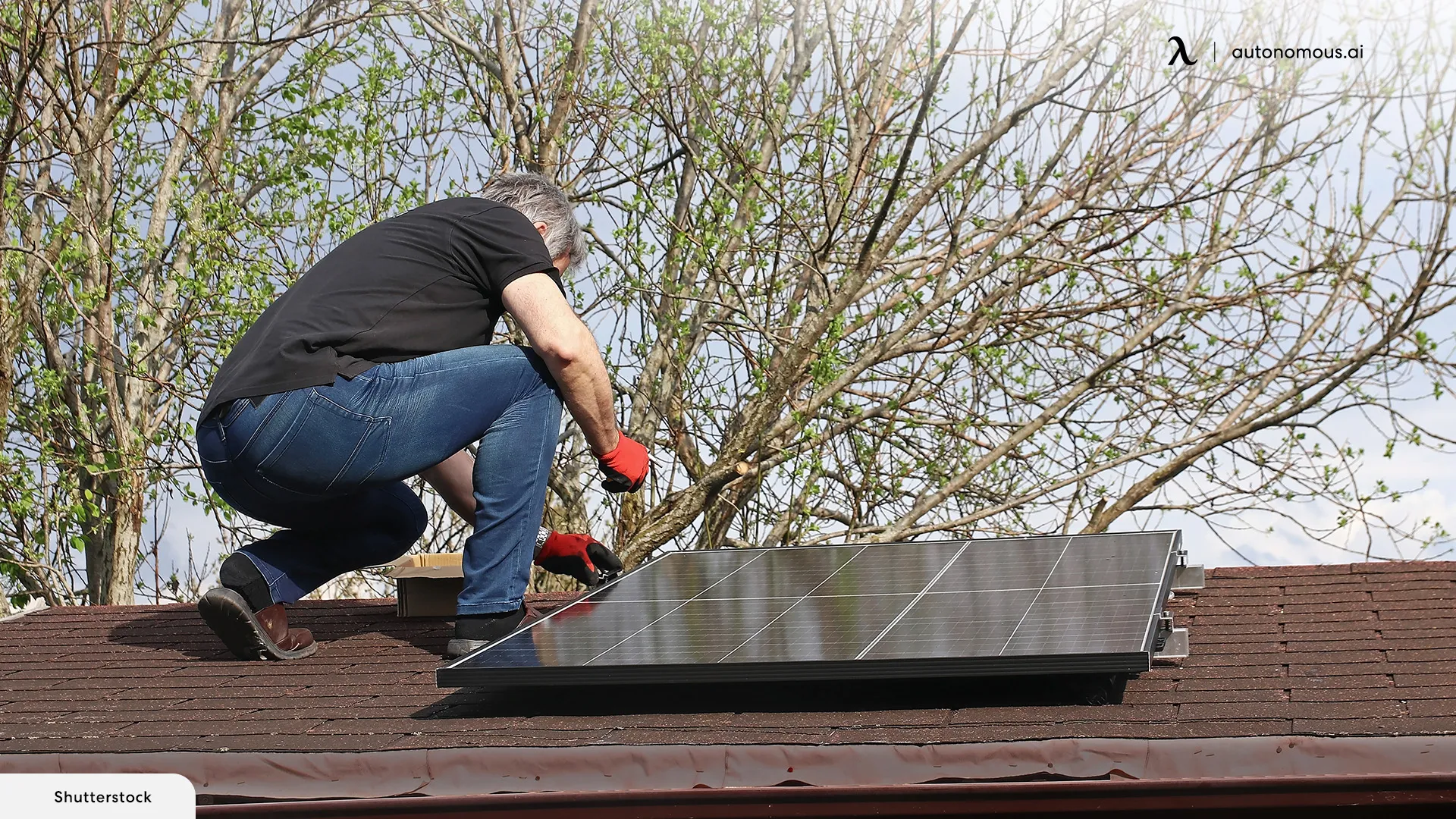
Bottom Line
You now have all the tools necessary to provide solar power for a shed. Even though you don’t need to be an expert to get started, we recommend you take your time to calculate how much you need so that you don’t overspend.
If you don’t have a shed yet and are looking for smart solutions to work outside, consider Autonomous and its prefab ADUs. They combine functionality with aesthetics, so you can ensure you’re getting the best of both worlds.
Once you get a solar power system for your shed, you’ll discover a new way of saving money. We hope this article helped you with your purchase!
Spread the word
.svg)



